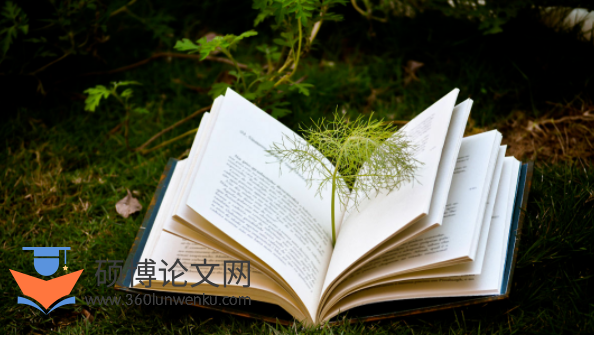本文是一篇英语论文,本报告句法方面译者使用了拆分法、合译法以及改译。篇章层面译者遵循了一致性与连贯性原则。最后一部分总结了研究结果,指出了研究的局限性,并对未来的研究提出了展望。
Chapter One Task Description
1.1 Background of the Task
The translation task of excerpts from See America First was recommended by the supervisor. The translator was in charge of “Four unusual pictures” and “Lancaster County and Gettysburg” (Chapter Four) as the source texts to work on. This exercise involved translating roughly 11,000 words, with the E-C translation completed on time.
See America First co-authored by Orville O. Hiestand and Chas J. Herr, serves as a travel text that captures the allure of the eastern regions of the United States. It meticulously outlines various American points of interest, including national parks, conservation areas, historic sites, and picturesque locations. Additionally, the book offers practical tips ranging from transport options and lodging details to recommended activities, aiding travelers in crafting their trips
During the early 1900s, the United States experienced swift industrial growth and city expansion, paralleled by the emergence of an affluent middle class. With increased free time and spending power, this group was keen on discovering new destinations and immersing themselves in diverse cultures. The expansion of the U.S. railway system also made cross-country travel more accessible and economical.

英语论文怎么写
......................
1.2 Linguistic Features of the Source Text
The characteristics of See America First lie in its persuasive and captivating prose style. The chapter vividly describes attractions and tourist destinations across the United States, immersing readers in the splendorous scenery and unique atmospheres through rich details and vivid language. It belongs to a composite type of travel text that combines informational, evocative, and aesthetic functions. This section analyzes the language features of the text from three levels: vocabulary, syntax, and discourse.
In terms of vocabulary, this language is marked by its simplicity and straightforwardness, yet it gives readers a feeling of passion and vitality. The chapter includes geographical terms such as specific place names and terrain features. In addition, it extensively uses vivid and colorful adjectives and adverbs to describe America’s natural landscapes and cultural characteristics. These elements enhance the literary sense and attractiveness of the writing, making the descriptions more vivid and allowing readers to deeply feel the beauty and grandeur of the attractions.
From a syntactic perspective, the sentence structures are diverse, with a balance between long and short sentences. The varied syntactic features give readers a vivid and compelling feeling. Through various sentence structures, rhetorical devices, and detailed descriptions, the authors decorate the prose, presenting the customs and scenery of America to readers, enabling them to experience the charm of America firsthand.
.........................
Chapter Two Process Description
2.1 Preparatory work
Pre-translation is a key step in ensuring the success of translation tasks and serves as the starting point of the entire endeavor. It lays the critical groundwork and provides direction for the remainder of the translation process. At this stage, the translator carried out a series of preparatory work to ensure the smooth progress and high-quality completion of translation tasks. The translator chose Chapter 4. The translation materials were finalized in August 2023. The first draft of the translation was completed in mid-October 2023 and underwent several revisions.
In terms of translation preparation, the translator mainly worked on the following three aspects.
First, the translator read a large number of parallel texts, especially Chinese travel texts, such as The Most Beautiful Places in China and Searching for Old Beijing: A Walking Tour through History. These provided the translator with abundant translation materials of tourism texts. Additionally, the translator could learn new geographical terminology and translation expressions from these texts, which is beneficial for improving translation quality. Furthermore, since the original text is a travel essay, the translator also read some books related to literature and history to accumulate a rich vocabulary and expressions, enhancing the language sensitivity. When facing more challenging literary genres like essays, the translator could better understand the original meaning and produce translations closer to the source text, improving overall quality.
..............................
2.2 While-Translating
The translation materials were jointly translated by three translators. They selected their respective chapters and translated them into Chinese. Additionally, the selected text consists of a coherent and complete chapter.
During the translation process, the translator first had a comprehensive understanding of the original text, deeply analyzing its content, structure, and grammar, which included many authentic expressions or complex sentences. The key to this part was to rephrase the original text into the target language while maintaining its meaning, ensuring accuracy and coherence.
During the translation process, the translator ensured that the translation complied with the language rules of the target language. For example, when translating certain historical professional terms, such as the Revolutionary War, indigenous peoples, colonies, etc., as mentioned in Chapter 4, the translator conducted background research to ensure accurate understanding and communication of relevant information. Additionally, guided by translation theory, the translators used different translation strategies according to the nature of the task and the content, such as the most commonly used free translation. Furthermore, the translators paid attention to adding annotations to mark difficult points or important translations, facilitating quick reference in later writing. Finally, during the translation process, the translators maintained the format of the original document, especially the titles and paragraph layout.
.............................
Chapter Three Theoretical Framework ............................... 8
3.1 Outline of the Functional Equivalence Theory .................................. 8
3.2 Basic Rules of the Functional Equivalence Theory ......................... 10
Chapter Four Case Study ............................. 14
4.1 At Lexical Level .......................... 14
4.1.1 Addition ................................. 14
4.1.2 Omission ................................... 17
Chapter Five Conclusion ........................ 36
Chapter Four Case Study
4.1 At Lexical LevelIn English-Chinese translation, the analysis of original vocabulary involves multiple aspects, including the direct meaning of words, their cultural connotations, contextual functions, and similarities or differences with the target language. The purpose of vocabulary analysis is to ensure that the translation
ot only conveys the literal meaning of the source language but also reflects its deeper implications and cultural nuances. Translators need to consider how to select appropriate words to adapt to the cultural and linguistic norms of the target language while preserving the style and tone of the original text. In this process, translators may use techniques such as expansion, omission, or other strategies to handle specific vocabulary translations, aiming to achieve accurate semantic conveyance and cultural adaptation.
4.1 At Lexical Level In English-Chinese translation, the analysis of original vocabulary involves multiple aspects, including the direct meaning of words, their cultural connotations, contextual functions, and similarities or differences with the target language. The purpose of vocabulary analysis is to ensure that the translation not only conveys the literal meaning of the source language but also reflects its deeper implications and cultural nuances. Translators need to consider how to select appropriate words to adapt to the cultural and linguistic norms of the target language while preserving the style and tone of the original text. In this process, translators may use techniques such as expansion, omission, or other strategies to handle specific vocabulary translations, aiming to achieve accurate semantic conveyance and cultural adaptation.

英语论文参考
...........................
Chapter Five Conclusion
Under the guidance of the theory of functional equivalence, the translator completed the translation of Chapter Four of See America First After the entire translation practice, the translator analyzed these typical translation cases. Here, the translator needs to summarize the translation task.
The translation practice proved the constructive role of the theory of functional equivalence in English-Chinese translation practice. From the perspectives of vocabulary, syntax, and discourse, the translator analyzed the translation text and employed translation strategies such as addition, division, and omission, aiming to apply the theory of functional equivalence to practice and use practice to prove the effectiveness of this theory.
More importantly, through this translation practice, the translator gained a deeper understanding and comprehension of the theory of functional equivalence. The translator's translation ability and level have also been improved, and valuable translation experience has been accumulated. Furthermore, through translating this chapter, the translator fully understood the importance of protecting the environment and achieving harmonious coexistence between humans and nature. However, in the process of translation practice, the translator also encountered many difficulties. For example, dealing with some long and difficult sentences in the original text was still quite challenging for the translator, requiring a lot of time for analysis. Additionally, for texts with rich cultural backgrounds like the original text, the translator still found it difficult to gain a deep understanding, requiring a significant amount of time and effort to collect relevant information. This also reflects that the translator's academic attainments still need to be strengthened, and in the future, the translator still needs to continuously practice and improve translation skills and knowledge.
reference(omitted)
